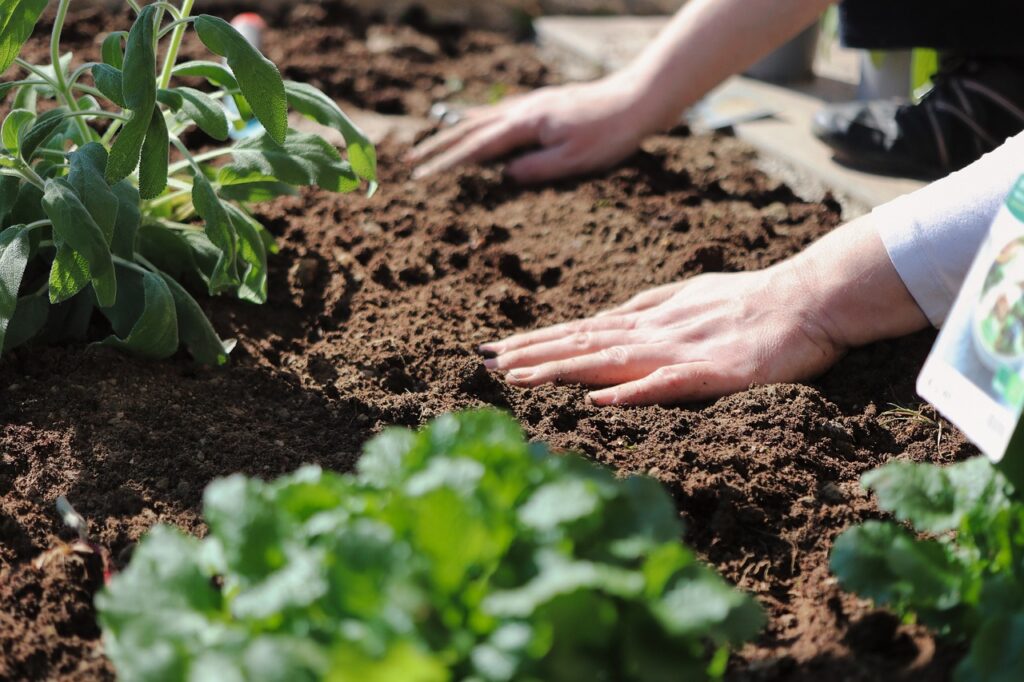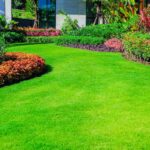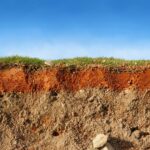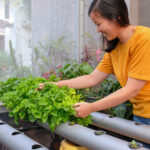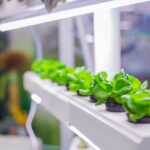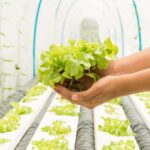Soil erosion is a significant environmental issue that can lead to decreased agricultural productivity, water quality degradation, and landscape instability. It occurs when soil is displaced by wind, water, or human activities, leading to loss of fertile topsoil and damage to the ecosystem. However, there are several effective strategies and techniques to prevent soil erosion and maintain healthy soil. Here are some of the most effective methods:
Vegetative Cover
One of the most effective ways to prevent soil erosion is to maintain a healthy vegetative cover. Plants and trees stabilize the soil with their roots, reduce the impact of raindrops on the soil surface, and slow down water runoff. Some key practices include:
Planting Grasses and Ground Covers: These plants spread quickly and provide excellent ground cover, reducing soil erosion.
Using Mulch: Mulch helps protect the soil from direct rain impact and conserves moisture, promoting plant growth.
Maintaining Forests and Grasslands: Preserving natural vegetation in these areas is crucial for soil stability.
Contour Farming
Contour farming involves plowing and planting across the slope of the land rather than up and down. This practice helps to:
Reduce water runoff.
Increase water infiltration.
Minimize soil erosion on sloped fields.
Terracing
Terracing is the creation of flat areas on steep slopes to reduce soil erosion and surface runoff. By converting a slope into a series of steps, water is slowed down and absorbed into the soil, preventing erosion. This technique is widely used in mountainous regions for farming.
Strip Cropping
Strip cropping involves planting crops in alternating strips along the contour of the land. This practice helps to:
Reduce erosion by slowing down water flow.
Trap sediment in vegetative strips.
Improve soil fertility and structure.
Windbreaks
Windbreaks are barriers, usually made of trees or shrubs, planted to reduce wind speed over the soil surface. Windbreaks help to:
Protect soil from wind erosion.
Reduce evaporation rates.
Provide habitat for wildlife.
Cover Crops
Cover crops, such as clover, rye, and vetch, are planted during off-season times when the soil would otherwise be bare. These crops:
Protect the soil from erosion.
Enhance soil structure and fertility.
Suppress weeds and pests.
Conservation Tillage
Conservation tillage is a farming practice that leaves the previous year’s crop residue on the fields to reduce soil erosion and runoff. Types of conservation tillage include no-till, strip-till, and mulch-till. This practice helps to:
Maintain soil moisture.
Improve soil health.
Reduce erosion by wind and water.
Retaining Walls and Riprap
For areas prone to severe erosion, especially along waterways and steep slopes, retaining walls and riprap (rock armoring) can be effective. These structures:
Stabilize the soil.
Reduce water flow velocity.
Prevent further erosion.
Gully Reclamation
Gullies formed by erosion can be stabilized by filling them with rocks, planting vegetation, or constructing check dams. These measures help to:
Prevent further gully formation.
Promote sediment deposition.
Rehabilitate eroded areas.
Educating and Engaging Communities
Community involvement and education are crucial for successful soil erosion prevention. Educating farmers, landowners, and the public about the importance of soil conservation and the methods to prevent erosion can lead to widespread adoption of best practices. Community-based projects and government programs can provide resources and support for soil conservation efforts.
Preventing soil erosion requires a combination of strategies tailored to specific environmental conditions and land uses. By implementing vegetative cover, contour farming, terracing, strip cropping, windbreaks, cover crops, conservation tillage, retaining walls, and gully reclamation, we can protect our soil resources and ensure sustainable land use. Engaging communities and fostering awareness about soil conservation is essential for long-term success in preventing soil erosion.
Integrated Approaches and Modern Techniques
In addition to traditional methods, integrated approaches and modern techniques are increasingly being adopted to combat soil erosion effectively. Here are some advanced strategies that leverage technology and interdisciplinary collaboration:
Agroforestry
Agroforestry combines agriculture and forestry practices to create more sustainable land-use systems. By integrating trees and shrubs into crop and livestock systems, agroforestry can:
Enhance biodiversity.
Improve soil structure and fertility.
Provide additional income sources for farmers through the production of timber, fruits, and other tree products.
Soil Erosion Modelling and Monitoring
Modern technology enables precise monitoring and modeling of soil erosion processes. Geographic Information Systems (GIS) and Remote Sensing (RS) technologies can be used to:
Assess soil erosion risk.
Monitor changes in land use and vegetation cover.
Develop targeted soil conservation plans based on detailed erosion models.
Biological Soil Crusts
In arid and semi-arid regions, promoting the growth of biological soil crusts—composed of lichens, mosses, and cyanobacteria—can help stabilize the soil surface. These crusts:
Reduce wind and water erosion.
Enhance soil fertility and water retention.
Promote the establishment of higher plants.
Constructed Wetlands
Constructed wetlands can be used to manage surface water runoff and reduce soil erosion. These engineered systems:
Filter and slow down water flow.
Trap sediments and pollutants.
Provide habitat for wildlife and enhance biodiversity.
Sustainable Grazing Practices
Overgrazing by livestock is a significant cause of soil erosion. Implementing sustainable grazing practices can help maintain vegetation cover and soil health. Key practices include:
Rotational grazing: Moving livestock between pastures to prevent overgrazing.
Stocking rate management: Ensuring the number of animals is appropriate for the land’s carrying capacity.
Restoring degraded rangelands: Re-seeding and managing invasive species to improve pasture health.
Policy and Legislation
Effective soil erosion prevention also requires supportive policies and legislation. Governments can play a critical role by:
Enforcing land use regulations that promote soil conservation.
Providing incentives and subsidies for farmers and landowners to adopt erosion control measures.
Funding research and development of new soil conservation technologies and practices.
Facilitating education and outreach programs to raise awareness about soil erosion and its impacts.
Community-Based Approaches
Community involvement is crucial for the success of soil erosion prevention efforts. Community-based approaches include:
Local conservation groups: Organizing community members to participate in soil conservation projects.
Farmer field schools: Providing training and demonstrations of effective soil erosion control techniques.
Participatory planning: Involving community members in the development and implementation of soil conservation plans.
Case Studies and Success Stories
Learning from successful soil conservation projects can provide valuable insights and inspiration. Here are a few notable examples:
Loess Plateau, China: Through extensive reforestation, terracing, and sustainable farming practices, the Loess Plateau experienced a dramatic reduction in soil erosion and improved agricultural productivity.
Wassuk Range, Nevada, USA: The implementation of rotational grazing and re-seeding of native grasses helped restore degraded rangelands and reduce soil erosion.
Mali’s Agroforestry Systems: Integrating trees into agricultural landscapes has improved soil fertility, reduced erosion, and increased crop yields.
Preventing soil erosion is essential for maintaining healthy ecosystems, ensuring food security, and protecting water quality. By combining traditional methods with modern technologies and integrated approaches, we can develop effective soil conservation strategies tailored to specific environmental conditions and land uses.
Community involvement, supportive policies, and continuous education are key to the long-term success of these efforts. Through collective action and commitment to sustainable land management practices, we can safeguard our soil resources for future generations.
